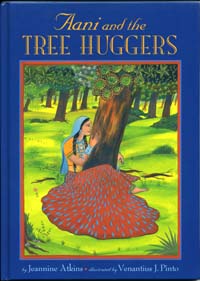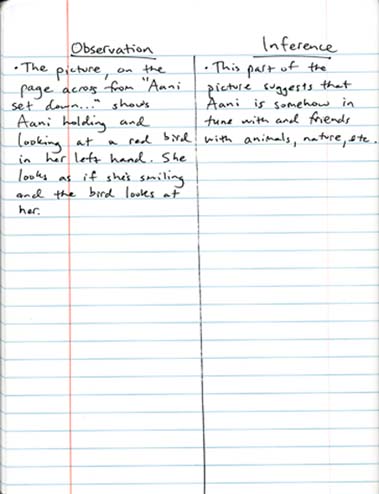
CHIPKO: A case study in CIVIL DISOBEDIENCE
and NON VIOLENT DIRECT ACTION
Ryan Redmond
Christa McAuliffe Regional Charter Public School, Framingham, MA
|
I. Read the following book: Aani of the Tree Huggers by Jeannine Atkins, illustrated by Venantius Pinto
II. Read the following book, if desired, as supplementary material: The People Who Hugged The Trees by Deborah Lee Rose, illustrated by Birgitta Saflund
Both of these books are picture books written for children, and while there may be some resistance to using such books with an older audience, I strongly disagree. Children's picture books often carry a weight well beyond their years, so to speak. Often spare and direct, the text as well as the illustrations can offer themselves up for reading on multiple levels. In addition, because they are illustrated children's books, they offer graspable, accessible entry points into the subject matter, which can be made more complex throughout the course of study. III. Take "observation and inference" notes on Aani and the Tree Huggers and follow with a discussion of the same format:
An example, albiet a rough one lacking much depth, of how "observation and inference" notes might look. Questions for writing and discussion. 1. Look at the first illustrated page. (Opposite: “Aani set down…”) What do you see? What do you observe? What do these images tell you? What do you infer about the situation depicted by the images? 2. Look at the illustrated page opposite “Aani’s mother looked past…” What do you see? What do you observe? What do these images tell you? What do you infer about the situation depicted by the images? 3. Look at the illustrated page opposite “’Namaste.’” What do you see? What do you observe? What do these images tell you? What do you infer about the situation depicted by the images? 4. Look at the illustrated page opposite ‘’Already you’ve cut more…’” What do you see? What do you observe? What do these images tell you? What do you infer about the situation depicted by the images? IV. Write on and discuss the following questions: 1. What is the main message of Aani and the Tree Huggers?
|
||||||
This site was created by Ryan Redmond at the NEH Summer Institute "Cultures and Religions of the Himalayan Region," held at the College of the Holy Cross, Summer 2006


